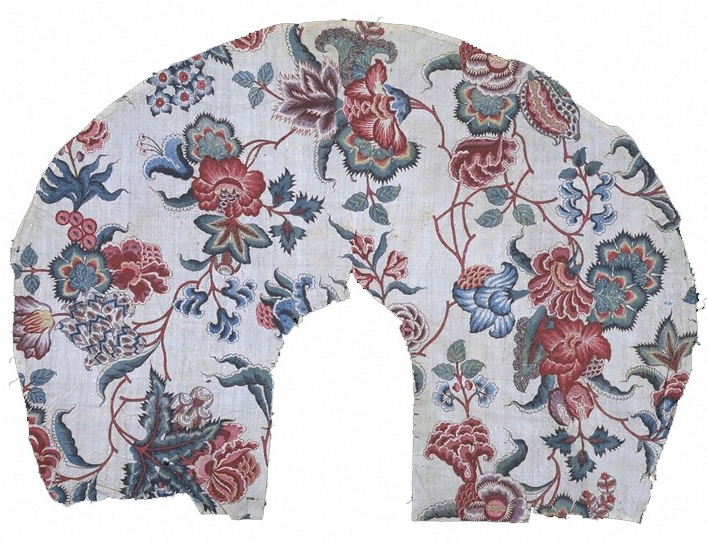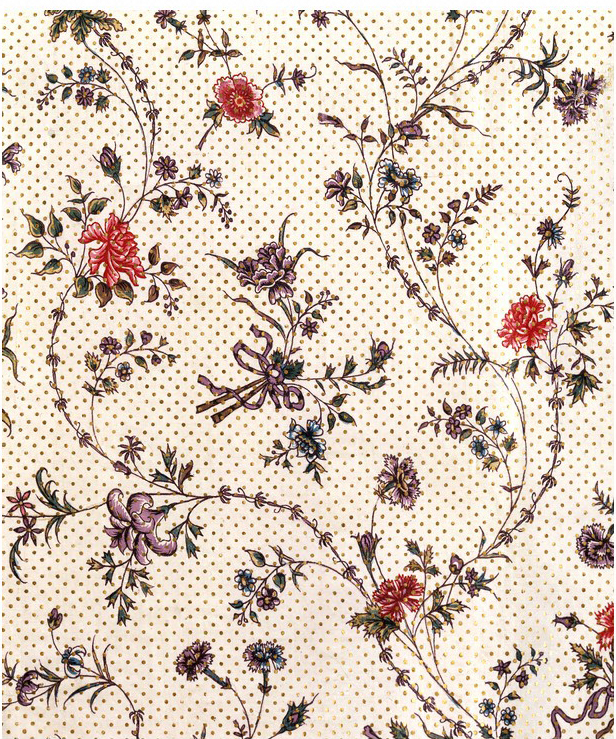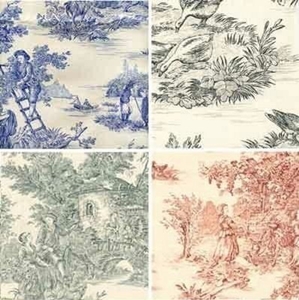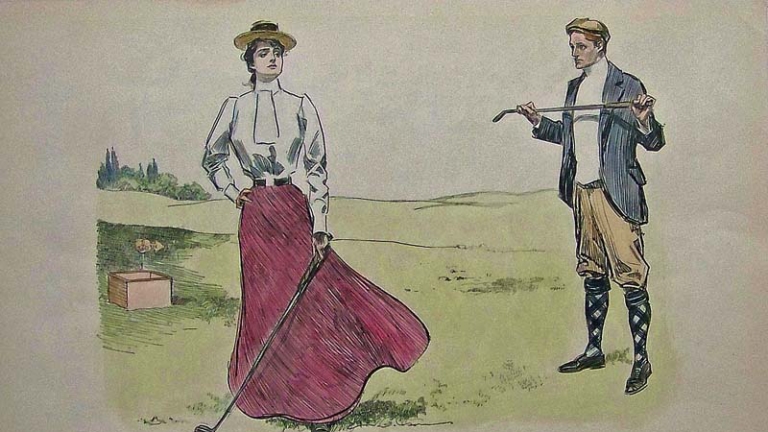Pretty Prints, Clever Cottons: 18th·Century Fabrics

by Kendra Van Cleave, First published for the March/April 2004 issue of Finery

Many of you may be thinking about creating new garments for the Travelers in Tuscany event on June 5th at Viansa Winery. While silk, wool, and linen were the most plentiful fabrics during the eighteenth century, today cotton is cheap, easy to find, and comfortable for a summer day in Sonoma.
But what should you look for when trying to approximate eighteenth-century cottons? What did Europeans and Americans wear in the period?
In India, painted cottons were developed in the fourteenth century. In the seventeenth century, as Europeans expanded their trade networks. they began to import these fabrics, which were appreciated because of their bright colors, lightweight hand, and ease in laundering.
The fabrics’ popularity increased as Europeans exported the technology of block printing to India. which made the fabrics easier and cheaper to manufacture and as Indians adjusted their designs to appeal to European aesthetics.

Some countries passed legislation against the import, manufacture, and sale of painted and printed cottons in order to protect domestic textile industries (as in France from 1686 to 1759 and England from 1700 to 1774). But by the 1730s, printed cottons were serious contenders in the European clothing and furniture market.
While most printed cottons continued to be manufactured in India until the 1790s, mills in England, France, Germany, the Netherlands and Switzerland began to produce their own versions.
Most printed cottons used for clothing were based on floral designs. By mid-century, fabrics were imitating fashionable silk brocades with European flowers (tulips, carnations, roses, and daises) incorporated into more traditionally Indian motifs on a white background.

In the 1780s, bolder designs with twisting stems became increasingly fashionable. Small floral “sprig” designs with tiny motifs on pastel backgrounds were cheap, and therefore became popular for working-class clothing.
So what should you look for when shopping for reproduction fabric for eighteenth-century clothing? First, take a look through at least a few of the books in the source list online to gain an “eye” for what is appropriate. Pay attention not only to the changing designs. but colors, scale, where the fabric was made, and what the fabric was used for. Keep in mind that throughout the eighteenth century, most clothing fabrics had a white background; design colors were mainly pink, red, purple, and blue: and the designs usually consisted of spare florals in a sprig or striped motif.
One of the most important points to remember if you want to be historically accurate is that what we call “toile” (large scale, scenic designs printed in one color on white backgrounds) was only used for home furnishings in the period.
Books
Albrecht-Mathey, Elisabeth. The Fabrics of Mulhouse and Alsace 1750-1800. Leigh-on-Sea: P. Lewis, 1968.
Beer, Alice Baldwin. Trade Goods: A Study of Indian Chintz in the Collection of the Cooper-Hewitt Museum of Decorative Arts and Design, Smithsonian Institution. Washington: Smithsonian Institution Press, 1970.
Brédif, Josette. Toiles de Jouy: Classic Printed Textiles from France, 1760-1843. London: Thames & Hudson, 1989.
Carlano, Marianne and Larry Salmon, eds. French Textiles: From the Middle Ages through the Second Empire. Hartford, Conn.: Wadsworth Atheneum, 1985.
Clouzot, Henri. Painted and Printed Fabrics: The History of the Manufactory at Jouy and Other Ateliers in France, 1760-1815. New York: Arno Press, 1974.
Harris, Jennifer, ed. Textiles, 5,000 Years: An International and Illustrated Survey. New York: Harry Abrams, 1993.
Irwin, John. Origins of Chintz, With a Catalogue of Indo-European Cotton-Paintings in the Victoria and Albert Museum, London, and the Royal Ontario Museum, Toronto. London: Her Majesty’s Stationery Office, 1970.
Irwin, John. Indian Painted and Printed Fabrics. Ahmedabad: Calico Museum of Textiles, 1971.
Montgomery, Florence M. Printed Textiles: English and American Cottons and Linens, 1700-1850. New York: Viking Press, 1970.
Montgomery, Florence M. Textiles in America, 1650-1870. New York: W.W. Norton & Co., 1984.
Pettit, Florence H. America’s Printed and Painted Fabrics 1600-1900. New York: Hastings House, 1970.
Sandberg, Gosta. The Red Dyes: Cochineal, Madder, and Murex Purple. Asheville, N.C.: Lark Books, 1994.
Rothstein, Natalie, ed. Barbara Johnson’s Album of Fashions and Fabrics. London: Thames and Hudson, 1987.
Victoria and Albert Museum. English Chintz. London: Her Majesty’s Stationery Office, 1955.
Victoria and Albert Museum. English Printed Textiles, 1720-1836. London: Her Majesty’s Stationery Office, 1960.
Another version of this article, with further examples, can be found at the author’s website: http://demodecouture.com/cotton/



Leave a comment